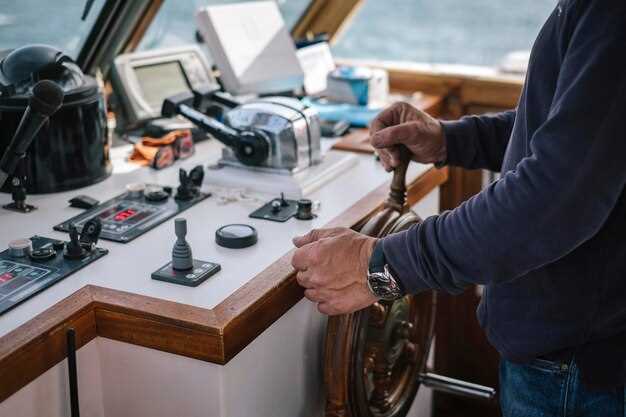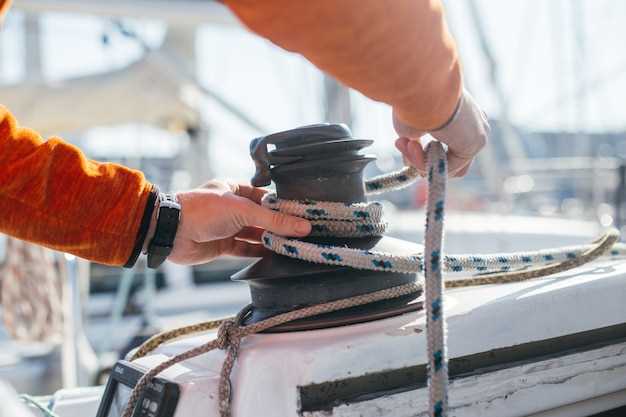
Choosing the right propeller for your boat is crucial for optimizing performance on the water. The two key factors that greatly influence propeller performance are size and pitch. Understanding these elements can help you make an informed decision, ensuring your boat operates efficiently and effectively.
The size of a propeller typically refers to its diameter, which is critical in determining how much water the propeller can move. A larger diameter may provide better thrust at low speeds, while a smaller diameter may improve top speed and fuel efficiency. It is essential to balance size with your boat’s specifications and the intended use, whether it be fishing, cruising, or watersports.
Pitch refers to the angle of the blades and essentially defines how far the boat will travel with one complete rotation of the propeller. A higher pitch can lead to greater speed, but may require more power to achieve optimal performance. Conversely, a lower pitch allows the engine to reach higher RPMs quickly, which is ideal for acceleration and maneuverability. Understanding the relationship between pitch and your boat’s engine capabilities is vital for selecting the right propeller.
Understanding Propeller Pitch: How It Affects Performance

Propeller pitch refers to the theoretical distance a propeller would move forward in one complete revolution, measured in inches. It is a crucial factor in determining how well a boat performs under various conditions. The pitch size affects speed, acceleration, and overall handling, making it essential for boat owners to select the right pitch to suit their needs.
A lower pitch size allows for quicker acceleration, making it suitable for boats that require fast starts or operate in areas with frequent stops. This is particularly beneficial for smaller boats or those used for towing. However, lower pitch can limit top speed, as the engine may reach its maximum RPM before achieving higher velocities.
Conversely, a higher pitch size is designed for efficiency at cruising speeds. This means that a boat can achieve greater speeds under optimal conditions while maintaining low engine RPM. A higher pitch is ideal for larger vessels designed for open water cruising, where smooth and sustained speeds are necessary.
It’s important to note that each boat and engine combination may respond differently to changes in pitch. A pitch that works well for one vessel might not perform adequately for another, even if they are the same size. Therefore, understanding the specific requirements of your boat’s size, weight, and intended use is crucial when selecting the appropriate pitch.
Monitoring your boat’s performance and making adjustments based on pitch can lead to more efficient fuel consumption and improved handling. Regular assessment ensures that you are getting the best out of your propeller, ultimately enhancing your boating experience.
Choosing the Right Diameter for Your Boat’s Propeller
Selecting the correct diameter for your boat’s propeller is crucial for optimal performance and efficiency. The diameter directly influences how the propeller interacts with the water, affecting thrust, speed, and fuel consumption.
A larger diameter propeller can move more water and generate more thrust, making it ideal for heavy loads or slow-moving vessels. However, it also requires more power from the engine, potentially leading to decreased speed if the engine cannot handle the load. This scenario is particularly relevant for boats designed for towing or carrying heavy gear.
On the other hand, a smaller diameter propeller may allow for higher speeds and is well-suited for lighter or faster boats. A smaller propeller can also reduce resistance in the water, leading to improved fuel efficiency. Nevertheless, if the diameter is too small, the vessel may struggle with taking off or maintaining stable speeds, especially under load.
When considering diameter, it’s essential to balance it with the propeller’s pitch. The pitch refers to the distance the propeller moves forward in one revolution. Together, these two parameters influence the overall performance of the boat. For example, a high pitch with a large diameter may provide excellent top speed but can result in poor acceleration.
Keep in mind the following factors:
- Engine specifications and horsepower
- Boat weight and intended load capacity
- Desired speed and efficiency
- Water conditions and typical operating environment
Ultimately, selecting the right diameter involves a careful analysis of these elements to ensure your boat operates at its best, achieving a fine balance between power, speed, and efficiency.
Evaluating Material Options: Which Propeller Material is Best?

Choosing the right material for your boat’s propeller is crucial for performance, durability, and efficiency. Various materials offer different advantages depending on factors such as application, size, and pitch.
Here are the most common propeller materials and their characteristics:
- Aluminum:
- Affordable and widely available.
- Lightweight, which can improve acceleration.
- Relatively soft, leading to potential damage in harsh conditions.
- Ideal for smaller boats or recreational use.
- Stainless Steel:
- More expensive but offers superior strength and durability.
- Resistant to corrosion, making it suitable for saltwater use.
- Can be manufactured to achieve higher pitch options, enhancing performance.
- Best for larger boats or those requiring enhanced speed and efficiency.
- Composite:
- Composed of plastic and other materials for lightweight and durable construction.
- Can be designed with varying pitch adjustments for versatility.
- Resistant to corrosion but may not withstand impacts as well as metals.
- Suitable for both freshwater and saltwater applications.
When evaluating which material is best for your propeller, consider the following:
- Boat Size: Larger boats typically benefit from the strength of stainless steel, whereas smaller vessels may do well with aluminum.
- Use Case: Assess the typical conditions you will operate in. If you frequently encounter rocky or turbulent waters, a more durable material will be advantageous.
- Performance Requirements: Higher pitch propellers often require materials that can withstand greater forces. Stainless steel tends to be the best option for maximum performance.
Ultimately, selecting the best propeller material depends on your specific needs, including boat size, expected use, and desired performance attributes. Aligning these factors with material characteristics will help ensure optimal performance on the water.



